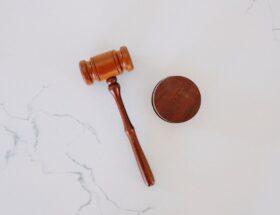Spider bite piercings have gained immense popularity in recent years, captivating the world of body modification enthusiasts.
If you’re considering getting spider bite piercings or simply want to learn more about this unique style, you’ve come to the right place.
In this comprehensive guide, we will delve into all the essential aspects of spider bite piercings, covering everything from the procedure and aftercare to potential risks and styling options.
So, let’s unravel the web of information and discover everything you need to know about spider bite piercings.
What are Spider Bite Piercings?
Spider bite piercings refer to a pair of symmetrical lip piercings placed closely together on either side of the lower lip.
Inspired by the appearance of an actual spider bite, this style offers a bold and edgy aesthetic.
Spider bite piercings can be achieved using various jewelry options, including studs, rings, or labret bars, adding versatility to the overall look.
The Procedure: What to Expect?
Before diving into spider bite piercings, it’s crucial to understand the process and what to expect during the procedure. Here’s a step-by-step breakdown:
- Research and Consultation: Find a reputable piercing studio and schedule a consultation. The piercer will assess your suitability for the piercing, explain the process, and answer any questions you may have.
- Preparation and Sterilization: On the day of the piercing, the piercer will clean the area around your lower lip, mark the spots for the piercings, and sterilize the necessary tools and jewelry.
- Numbing (Optional): Some piercers may offer a numbing agent to minimize discomfort during the procedure. Discuss this option with your piercer beforehand.
- Piercing Technique: Using a sterilized needle or cannula, the piercer will create two small openings on either side of your lower lip, carefully inserting the chosen jewelry.
- Aftercare Instructions: The piercer will provide detailed aftercare instructions to ensure proper healing and minimize the risk of complications.
Aftercare: Essential Steps for Healing
Proper aftercare is crucial for the successful healing of spider bite piercings. Follow these essential steps:
- Cleaning Routine: Gently clean the piercings twice a day using a saline solution or a mild, alcohol-free cleanser. Avoid touching the piercings with unwashed hands.
- Oral Hygiene: Maintain excellent oral hygiene by rinsing with a saltwater solution or a non-alcoholic mouthwash after meals. Avoid using alcohol-based mouthwashes, as they can cause irritation.
- Be Mindful of Diet and Habits: Avoid spicy, hot, and acidic foods during the initial healing period. Limit alcohol and tobacco consumption, as they can impede the healing process.
- Avoid Disturbing the Piercings: Refrain from touching, twisting, or playing with the jewelry. Be cautious when brushing your teeth or changing clothes to prevent snagging the piercings.
- Stay Clear of Oral Contact: Avoid oral activities such as kissing, oral sex, or playing with oral jewelry during the healing period to prevent irritation and infection.
Potential Risks and Complications:
- Infection: Poor aftercare or unsanitary practices can lead to infection. Look out for signs such as excessive redness, swelling, discharge, or prolonged pain.
- Gum and Tooth Damage: Improper placement or jewelry size can result in gum recession, tooth enamel erosion, or chipped teeth. Ensure that the piercer has adequate experience and knowledge in lip piercings.
- Rejection or Migration: In some cases, the body may reject the piercing, causing it to move or migrate. This can lead to discomfort, scarring, or even the need for removal.
- Swelling and Bruising: Swelling and bruising are common during the initial healing phase. However, if these symptoms worsen or persist, consult your piercer or a healthcare professional.
- Allergic Reactions: Some individuals may be allergic to certain metals used in jewelry. If you have known metal allergies, opt for hypoallergenic materials such as titanium or surgical-grade stainless steel.
Styling Options: Get Creative!
Spider bite piercings offer a range of styling options to express your individuality. Consider these ideas:
- Enhancing Makeup: Play around with lip colors, glosses, or lip art to accentuate your spider bite piercings. Coordinate your makeup with your jewelry for a cohesive and eye-catching appearance.
- Temporary Jewelry: If you’re hesitant about committing to permanent piercings, opt for temporary alternatives such as magnetic or clip-on jewelry. They offer a risk-free way to experiment with the spider bite look.
- Mixing and Matching: Spider bite piercings can be mixed and matched with other lip or facial piercings to create unique combinations. Consider complementing them with a labret piercing or a Monroe piercing.
- Jewelry Choices: Explore various jewelry options such as studs, rings, or labret bars. Experiment with different colors, shapes, and materials to achieve your desired aesthetic.
Conclusion:
Spider bite piercings provide a striking and daring style statement for individuals seeking to express their personality through body modification.
By understanding the procedure, aftercare, risks, and styling options, you can make an informed decision and enjoy your spider bite piercings with confidence.
Remember to consult a professional piercer, follow proper aftercare, and prioritize your health and safety throughout the process.
Embrace the uniqueness of spider bite piercings and make a bold statement that sets you apart from the crowd.
Frequently Asked Questions
What do I need to know before getting a spider bite piercing?
Before getting a spider bite piercing, research the procedure, find a reputable piercer, understand the placement, expect some pain and swelling, and be prepared for aftercare.
How long does a spider piercing take to heal?
Spider bite piercings typically take about 6 to 8 weeks to heal fully. However, individual healing times may vary, so it’s essential to follow proper aftercare instructions and consult your piercer if any issues arise.
Are spider bite piercings safe?
When performed by a professional piercer using proper techniques and high-quality jewelry, spider bite piercings are generally considered safe. However, there are potential risks such as infection, migration, and gum or tooth damage. It’s important to follow aftercare guidelines, monitor for any complications, and consult a piercer or healthcare professional if needed.










